As more families adopt both cats and dogs—and even bunnies, ferrets, or guinea pigs—pet harmony has become one of the most talked-about topics online.
Social media is full of videos showing dogs and cats sharing everything from beds to meals. And while those clips are heartwarming, not all dogs are naturally so tolerant.
In real life, food is often a trigger for stress, especially in homes with different types of pets. But some breeds have a temperament that makes sharing easier. They’re gentler, less territorial, and more in tune with group living.
Choosing the right dog can mean fewer conflicts and more peaceful mealtimes. In this article, you’ll find dogs that are known to share food with other pets lovingly, making your multi-pet home feel more like a team than a zoo.
Dog Breeds That Share Food With Other Pets Lovingly
1. Poodle
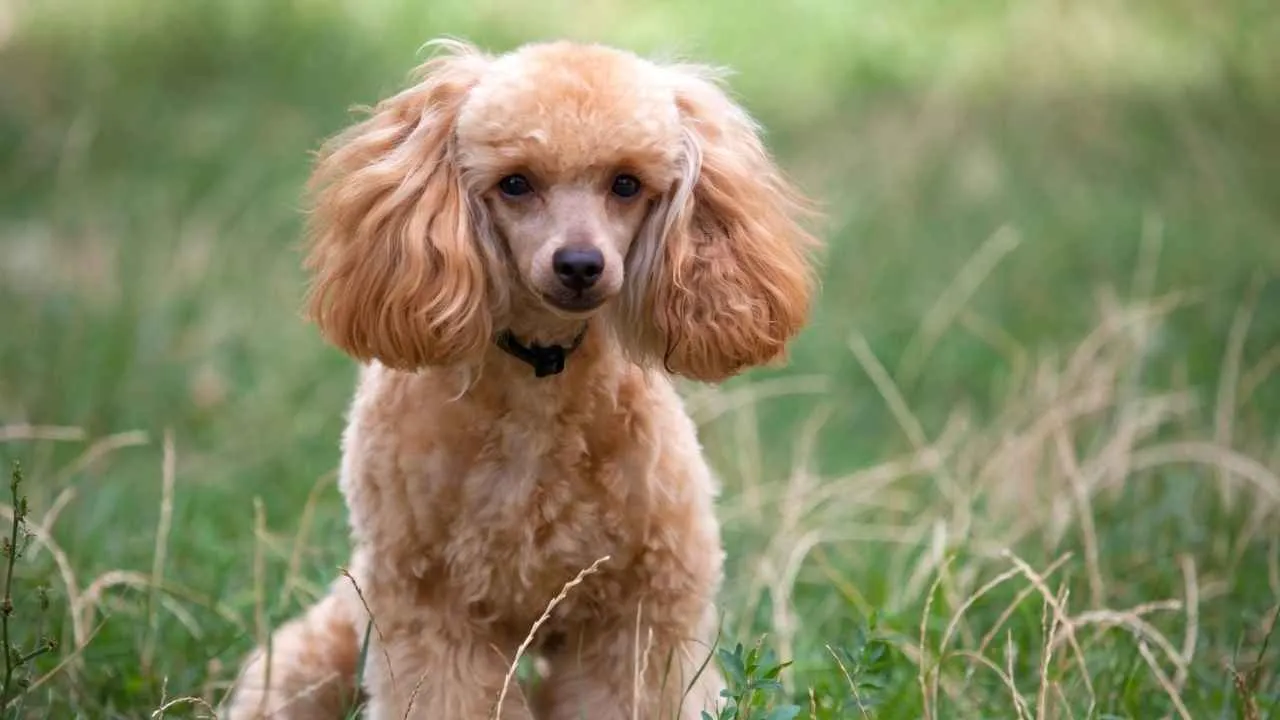
Poodles are susceptible to changes in behavior and mood, which extends to their interactions with other pets during mealtimes. They tend to read subtle cues and back away if another animal shows interest in their food. This makes shared feeding spaces less tense and more balanced.
Trained Behavior That Lasts
Their intelligence enables them to adopt structured habits, such as calm mealtime routines, quickly once trained. Many pet parents report that early boundary-setting around food pays off long-term. These dogs rarely challenge food bowls that aren’t theirs when consistency is in place.
Calm Presence Around Other Dogs
Poodles generally exhibit relaxed behavior when eating near other dogs, especially if raised together. They rarely escalate into guarding or defensive postures during shared moments. This even-tempered presence contributes to smoother group feeding dynamics.
Gentle Temperament Indoors
Toy and miniature varieties often live in multi-pet households and display a cooperative nature around shared spaces. Their affectionate nature extends beyond humans and can show up during snack-sharing moments. It’s their mild temperament that builds that quiet trust.
2. Labrador Retriever

Labradors are known to eat in group settings without displaying possessiveness or disharmony. They respond well to shared routines, especially when meals are structured. Their food behavior tends to stay predictable when raised with other household pets.
Gentle Behavior With Food
Due to their calm temperament, Labradors don’t usually react with stress or tension when food is shared near them. Even in competitive environments, they often wait or step back without confrontation. This patience helps maintain harmony across feeding zones.
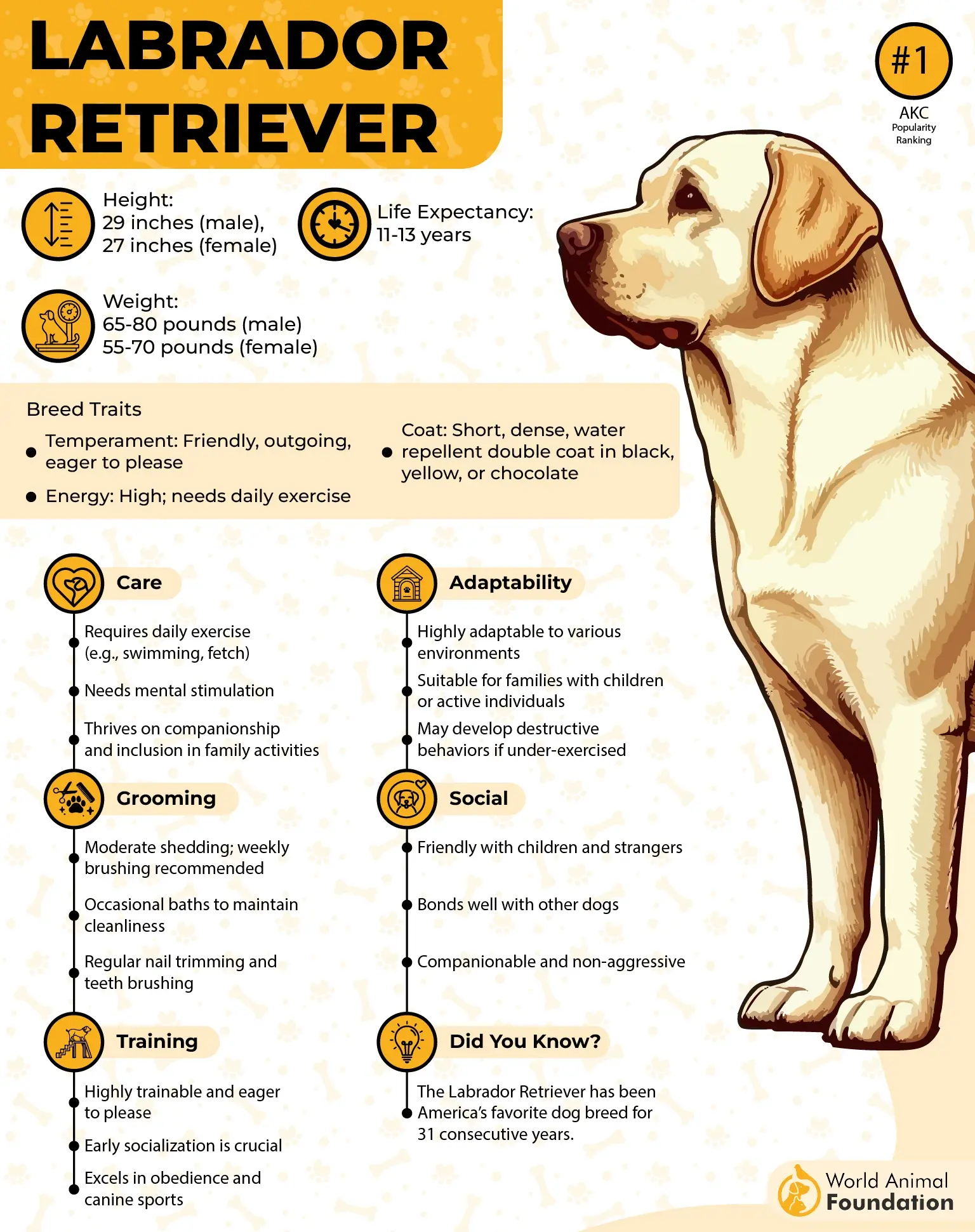
Social Reinforcement Over Time
They’re quick to mirror calm behavior when eating near others, especially with early socialization. When introduced to shared bowls or adjacent feeding spaces, they adapt smoothly. It’s a learned response that grows stronger through repetition and routine.
People-Oriented but Balanced
These dogs are widely loved for their affectionate personalities, but they also display fairness in multi-pet homes, as mentioned in Petplan. Their interest in food rarely overrides established rules. Even if originally bred for retrieving game, their home behavior is more about inclusion than dominance.
3. Golden Retriever

Golden Retrievers often show relaxed behavior during feeding when surrounded by other animals in the household. Their steady routine helps them focus on their own bowl without resource guarding. This low reactivity makes them easier to manage during shared mealtimes.
Their Calm Reaction to Food
Even during group feeding, these canines rarely show signs of anxiety or competition over food. Their calm nature supports smoother transitions when bowls are placed nearby. They can be guided gently to wait or yield without escalating tension.

Friendly Body Language
A soft tail wag, lowered ears, and steady gaze are often seen during food-sharing with companions. Their outgoing nature creates less friction when space is tight. Instead of rushing or hovering, they often pace themselves based on subtle cues.
Consistent in Multi-Pet Homes
In homes with cats, rabbits, or birds, many retrievers adjust their pace during treat distribution or feeding rituals. Their tolerance level toward other animals is among the highest. This makes them a stable choice in environments with mixed species.
4. Pembroke Welsh Corgi
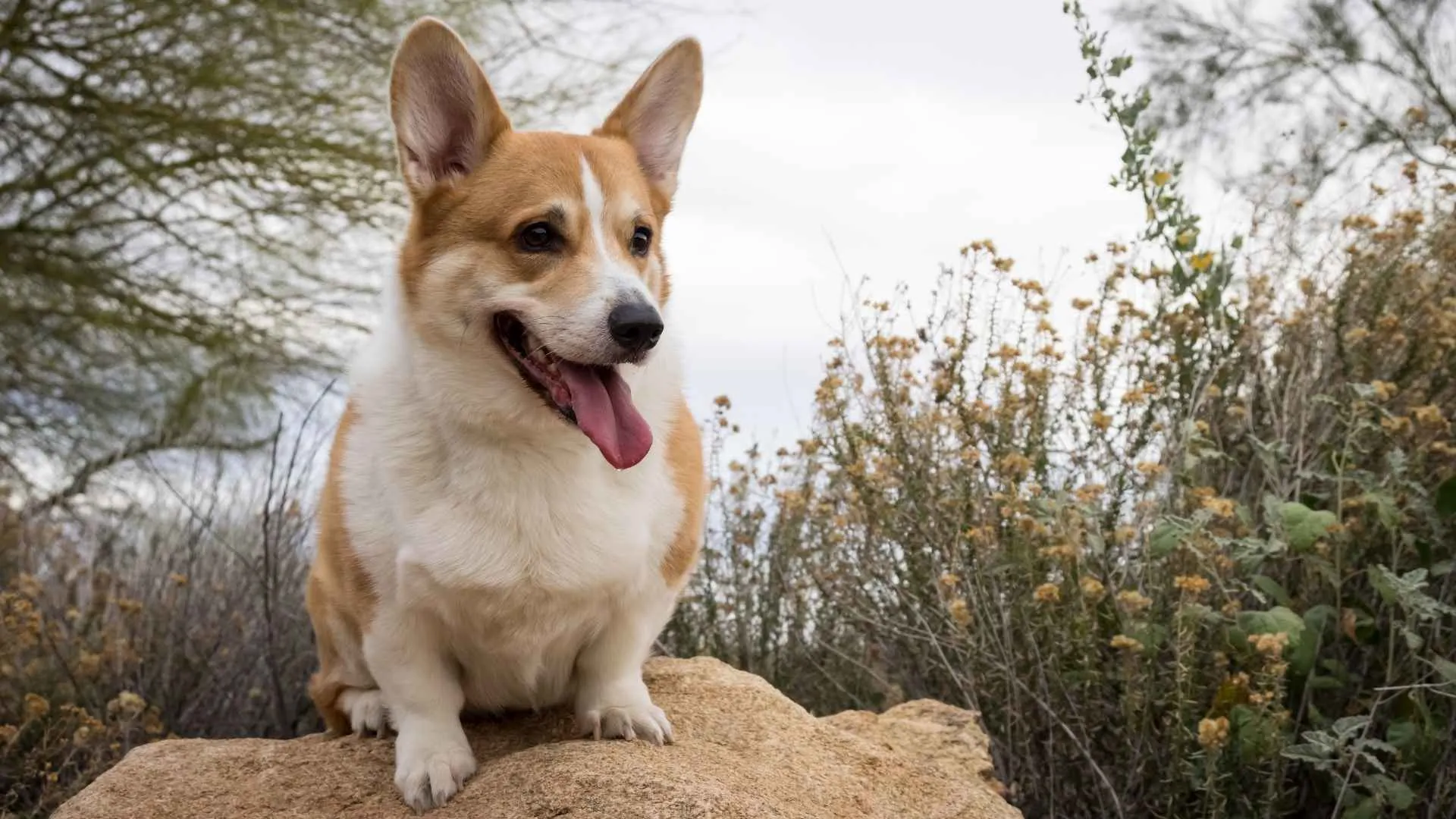
These dogs are known to remember familiar routines and reactions during feeding times. If introduced to shared bowls in a calm setting, they recall those boundaries clearly. This makes them less likely to show resource-guarding behavior with other animals later.
Habitual Sharing from a Young Age
Corgis raised with cats or small breeds from a young age tend to adjust their food-related behaviors around them. They quickly recognize shared space as a norm rather than a competition zone. Positive reinforcement helps those patterns stick for years.
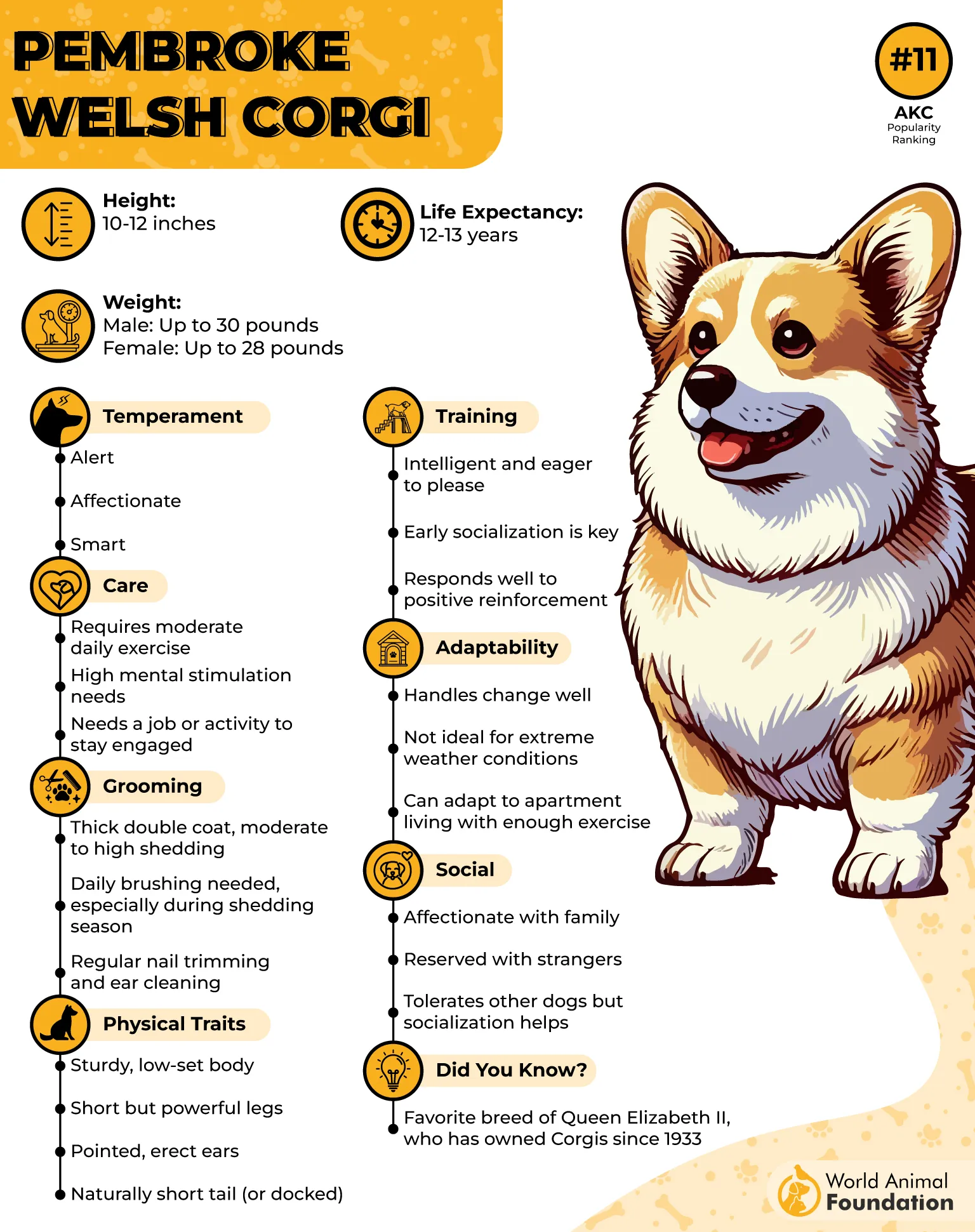
Watchful But Not Possessive
While they remain alert during meals, Pembroke Corgis rarely rush or hoard when other pets are nearby. They often pause and glance around before continuing to eat, gauging the energy in the room. That restraint allows for more relaxed feeding among groups.
Responsive to Social Energy
Corgis are incredibly affectionate and often pick up emotional cues before reacting. They sense whether other pets are calm or seeking food and adjust their response accordingly. Their ability to form strong connections translates into better cooperation at mealtime.
5. Beagle

Beagles were developed for pack hunting, which helps them adjust well to group feeding settings, as per the AKC. They’re used to eating alongside others without resource guarding. This ingrained behavior translates well into homes with multiple pets around shared spaces.
Responsive to Training
When properly trained early, Beagles learn to wait patiently or share limited resources with minimal tension. Their food motivation actually supports consistent habits. Structured feeding routines can make them more predictable around other animals.
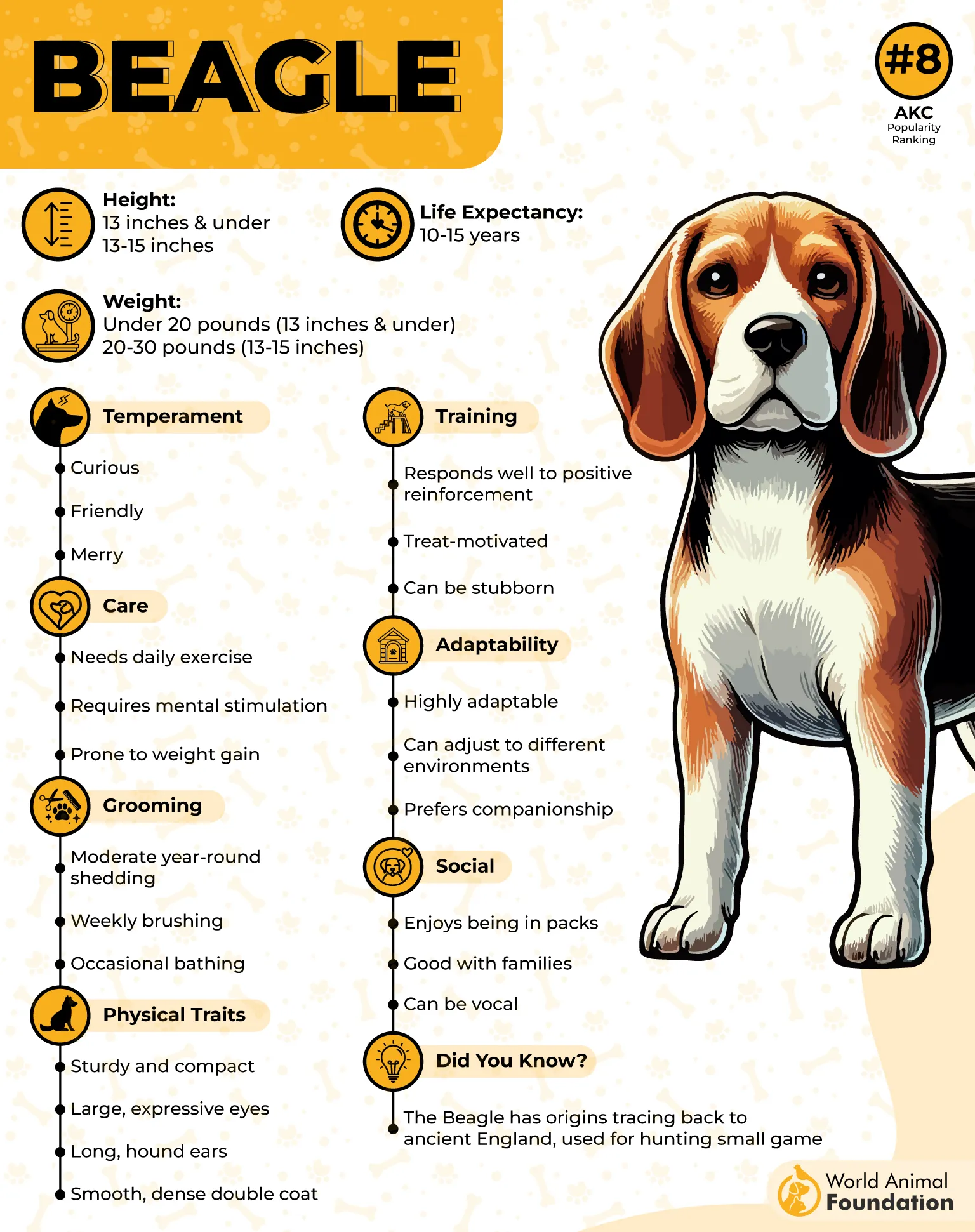
Comfortable with Social Groups
Their outgoing personalities make Beagles less reactive when other pets approach their bowl or share feeding zones. They often engage with curiosity rather than competition. This makes co-feeding or staggered feeding more manageable in mixed-species homes.
Tendency Toward Sharing
In some homes, Beagles have been seen nudging treats toward other animals or pausing when approached. While not universal, this tendency links back to their need for harmony within a group. They’re often chosen by families that already have pets.
6. Border Collie
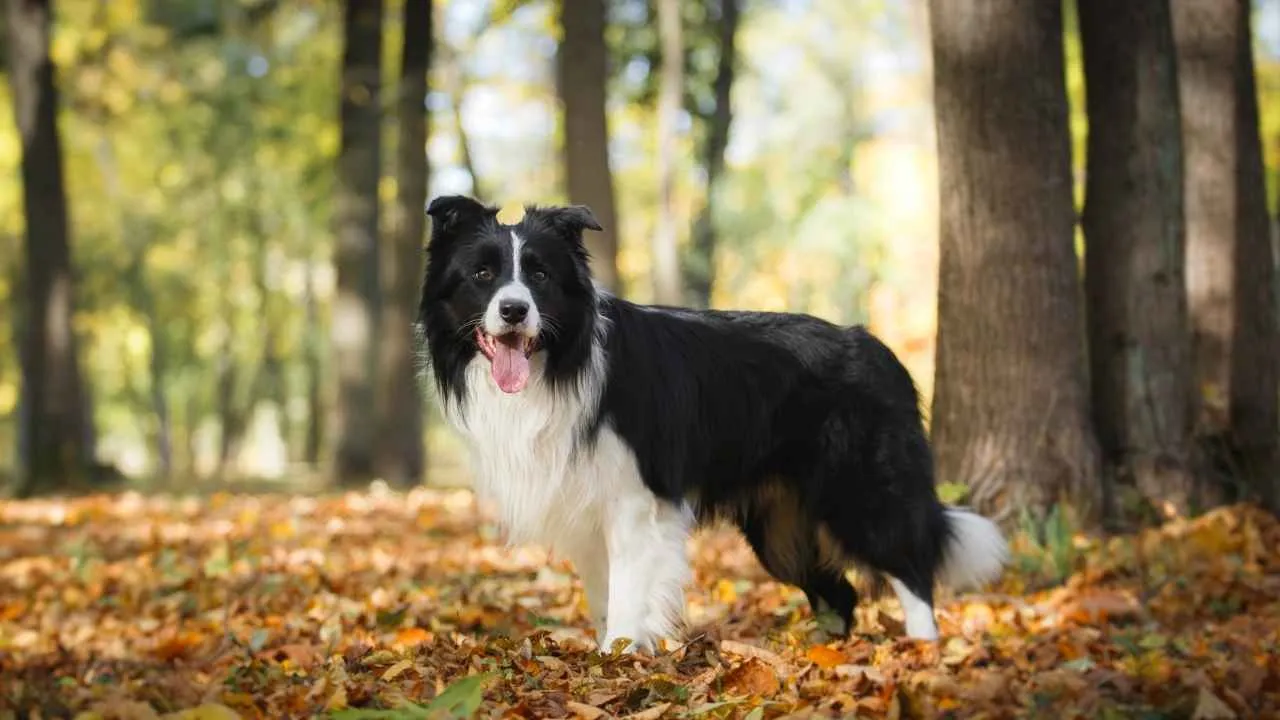
Border Collies are extremely observant and often wait for clear signals before approaching food. Their attention to routines makes them more cooperative in shared spaces. When living with other animals, they tend to pause and observe before reacting.
Gentle Control in Shared Areas
They maintain structured behavior around bowls, avoiding aggressive movement toward shared food zones. Their gentle nature is often shaped through early socialization. This self-restraint can reduce the chances of conflict during feeding time.
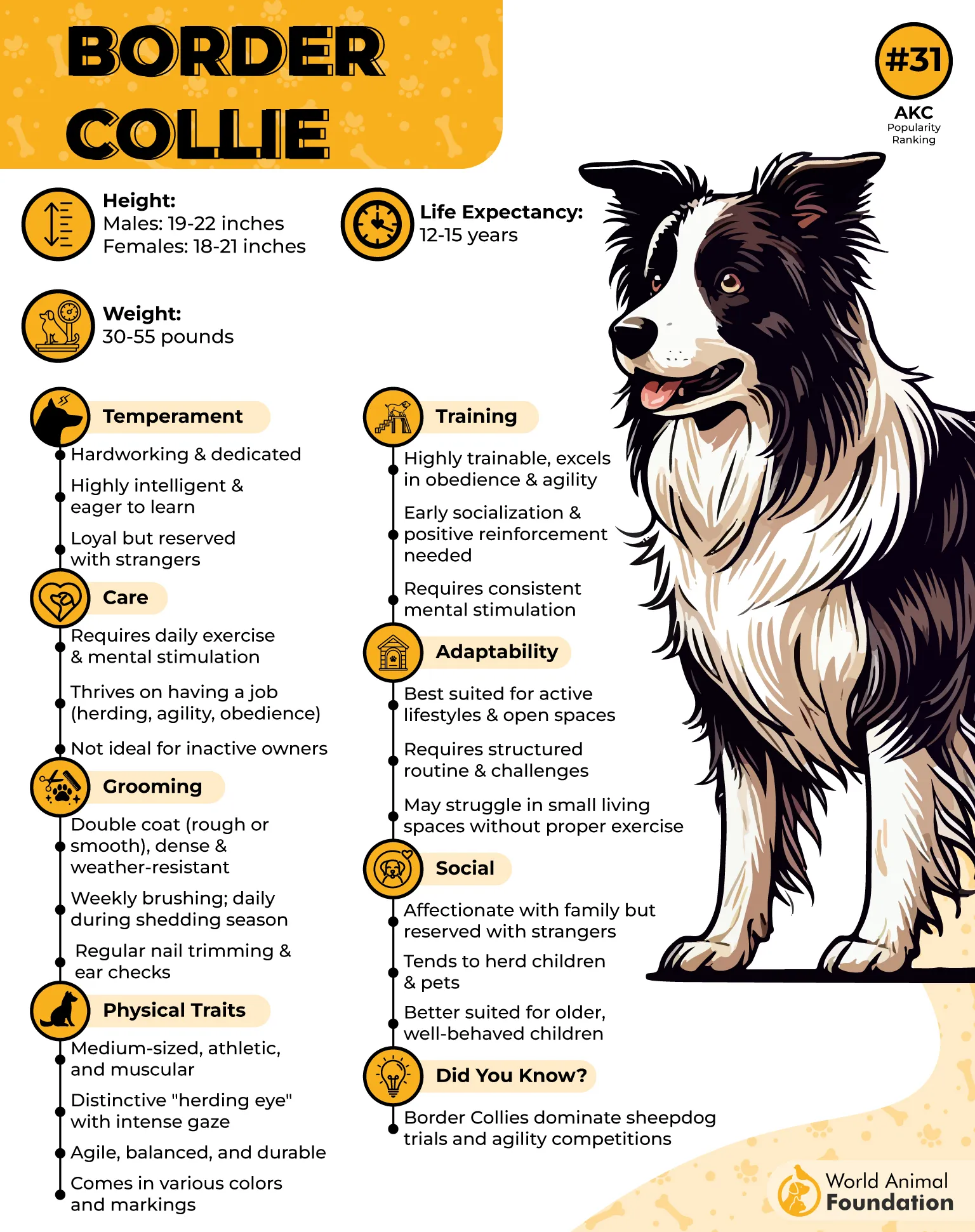
Emotion-Responsive Around Others
These dogs pick up on the moods of animals around them, adjusting their behavior accordingly. That makes them well-suited to homes where dogs, cats, or other pets coexist. Their consistency makes food-time boundaries easier to reinforce.
Focused, Cooperative Attitude
Though highly energetic during work or play, they maintain calm in indoor group settings. Border Collies often become great companions to animals they’re raised with. Their social rhythm blends into households with shared routines.
7. Maltese
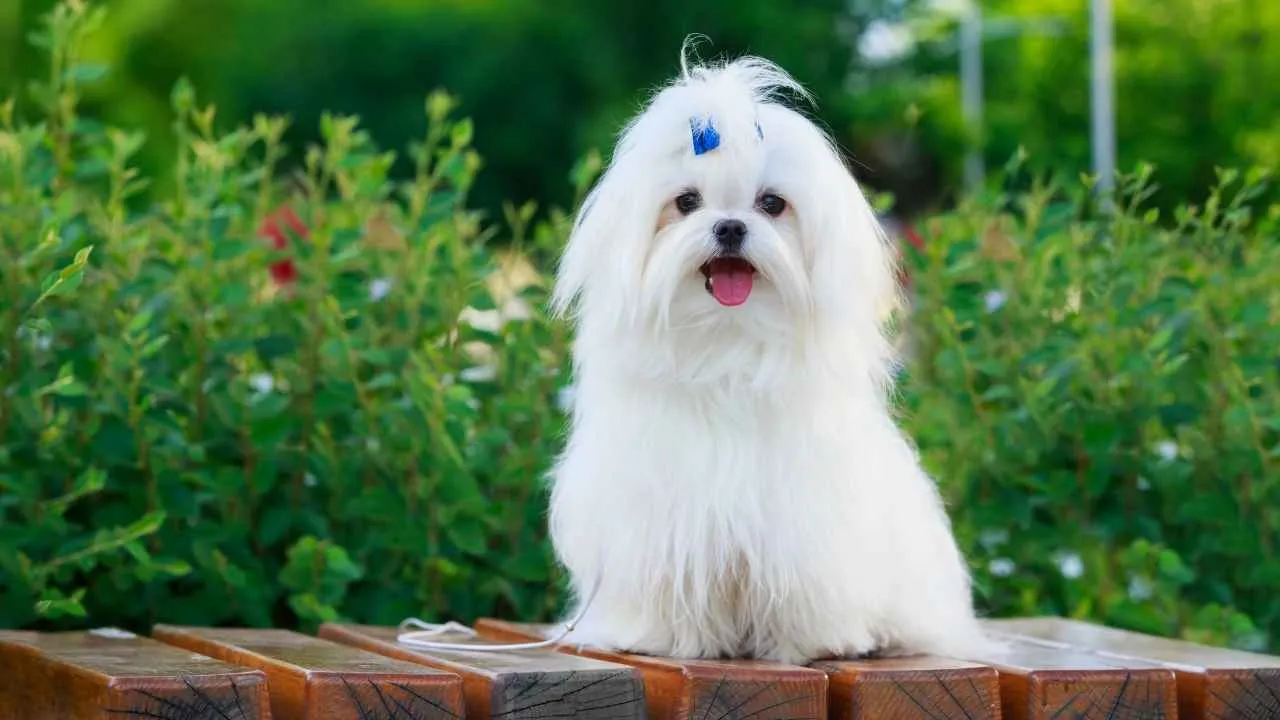
Maltese dogs are known for staying calm even when another pet approaches their bowl. Their non-confrontational behavior allows shared feeding areas to stay peaceful. This trait often stands out in homes with other small dogs or cats.
Quick Learners in Group Settings
With proper training, they adapt to routines that involve shared mealtimes or communal spaces. They understand patterns quickly and tend to follow house rules reliably. Their size also keeps them from being perceived as threatening to others.
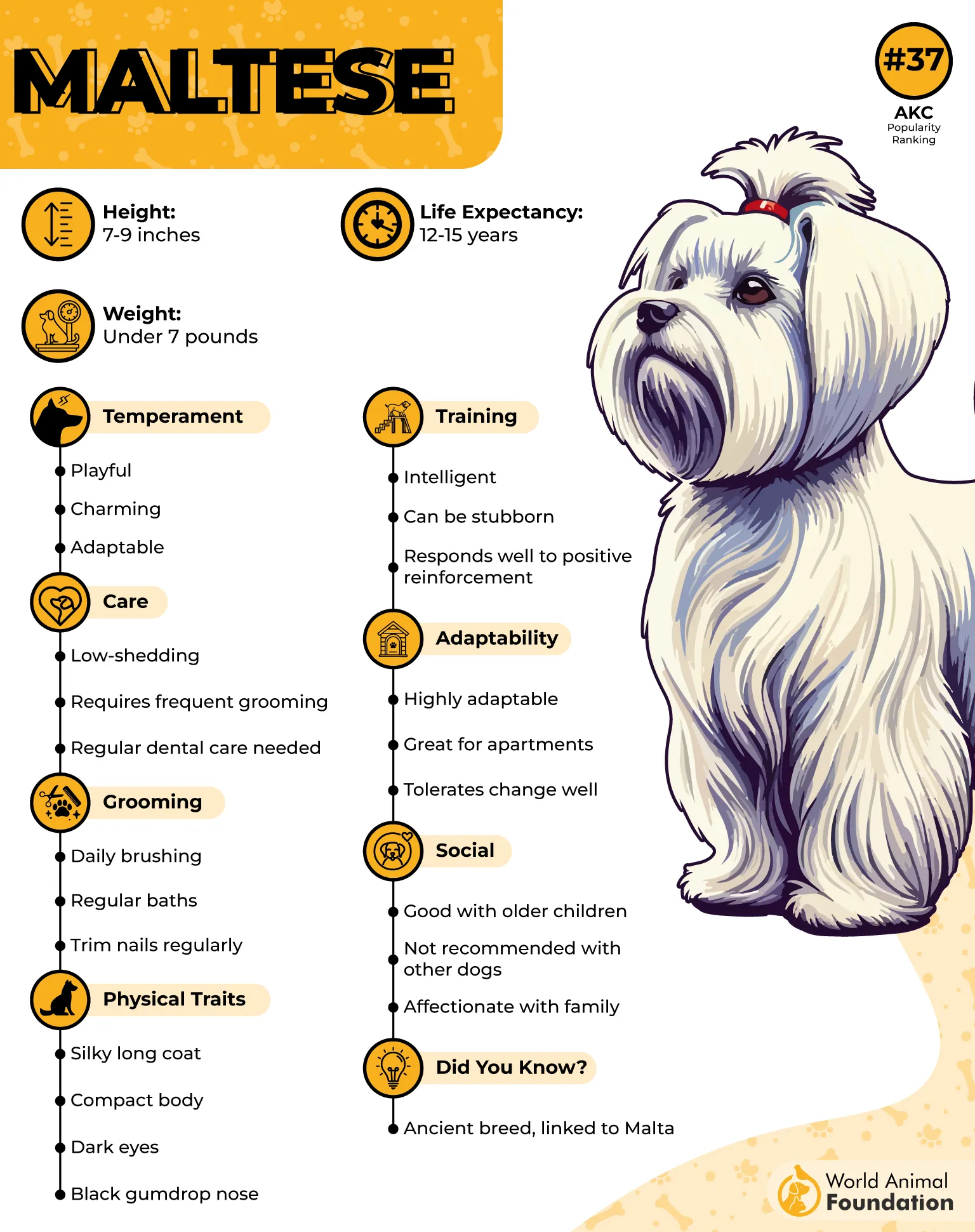
Friendly Around Familiar Pets
Once socialized, they show a steady comfort level around other pets during feeding or play. Their social disposition often reduces the chances of resource guarding. This consistency makes them easier to integrate into multi-pet environments.
Big Character, Small Frame
Despite their size, Maltese are known for having big personalities, which makes their presence known without being aggressive. They respond well to positive reinforcement and can be a good match for homes with calm or gentle pets. A trusting dynamic often forms early.
8. Cocker Spaniel

Cocker Spaniels are soft-mouthed and patient, which makes them less prone to possessive food behavior. Their body language remains relaxed, even when food is nearby. This calmness helps reduce tension during shared feeding with other pets indoors.
Positive Response to Training
When socialized properly from an early age, they become consistent and respectful during mealtimes. Their eagerness to please helps maintain boundaries without aggression. Reinforcement-based feeding routines work well with this cooperative breed.
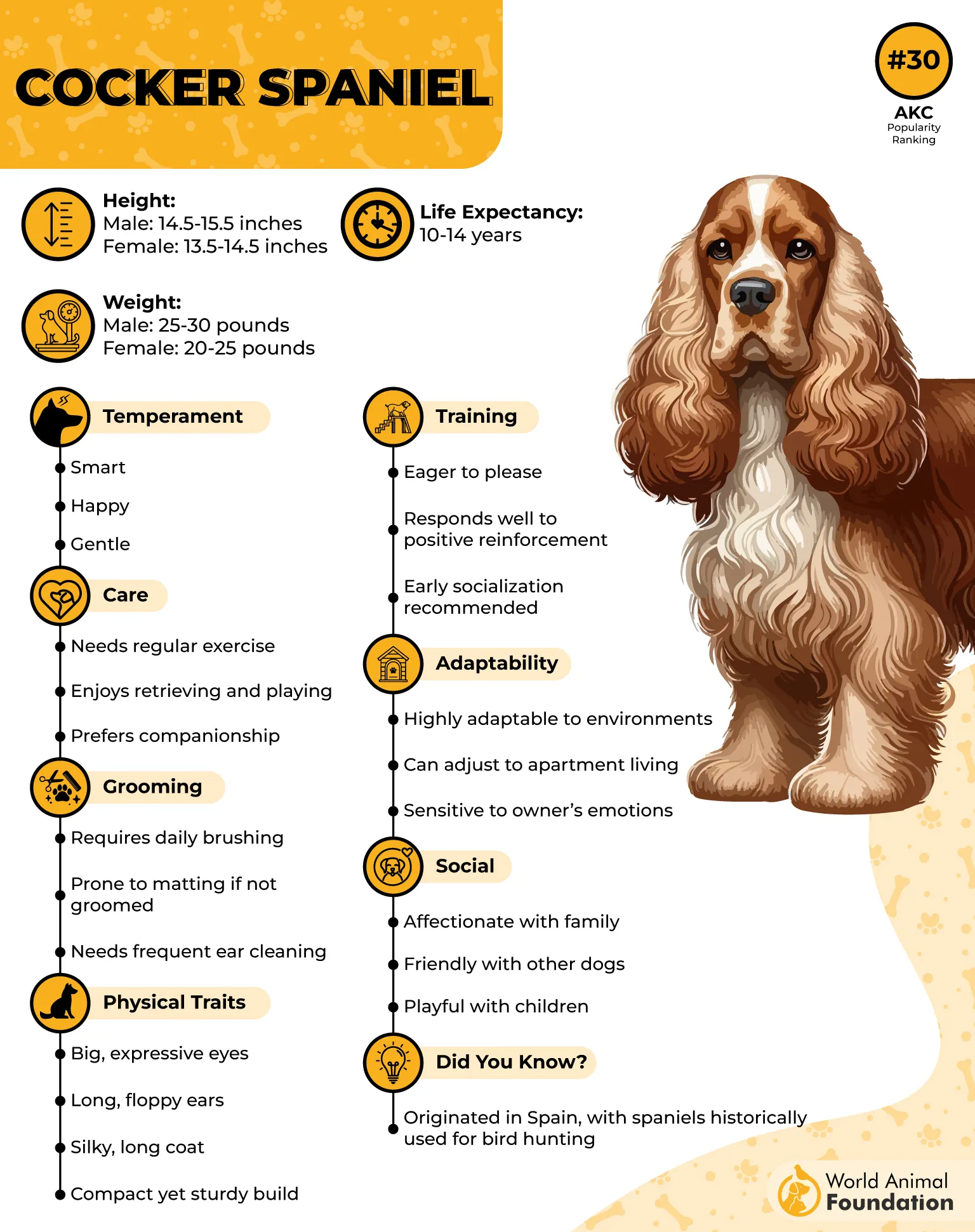
Loyal and Friendly Nature
They form strong bonds not just with their owners but also with other pets in the household, as per Petplan. Their loyal personality supports peaceful coexistence, especially when routines are stable. These traits make them easier to integrate into mixed-animal homes.
Affectionate Around Familiar Faces
Cocker Spaniels tend to be emotionally expressive, showing affection through gentle gestures. If they’re raised in a multi-pet setup, they often accept shared meals without conflict. Their behavior reflects a perfect match for homes with multiple companion animals.
9. Border Terrier

Border Terriers are generally mild around food, especially when raised in multi-pet households. They tend to avoid possessive behaviors and don’t show strong guarding instincts. Their calmer attitude at mealtimes helps reduce friction in shared spaces.
Social Behavior with Familiar Pets
They are known to get along well with household animals they grow up with, adapting easily to consistent routines. When fed alongside familiar pets, their behavior remains steady. This predictability allows smoother management of shared food areas.
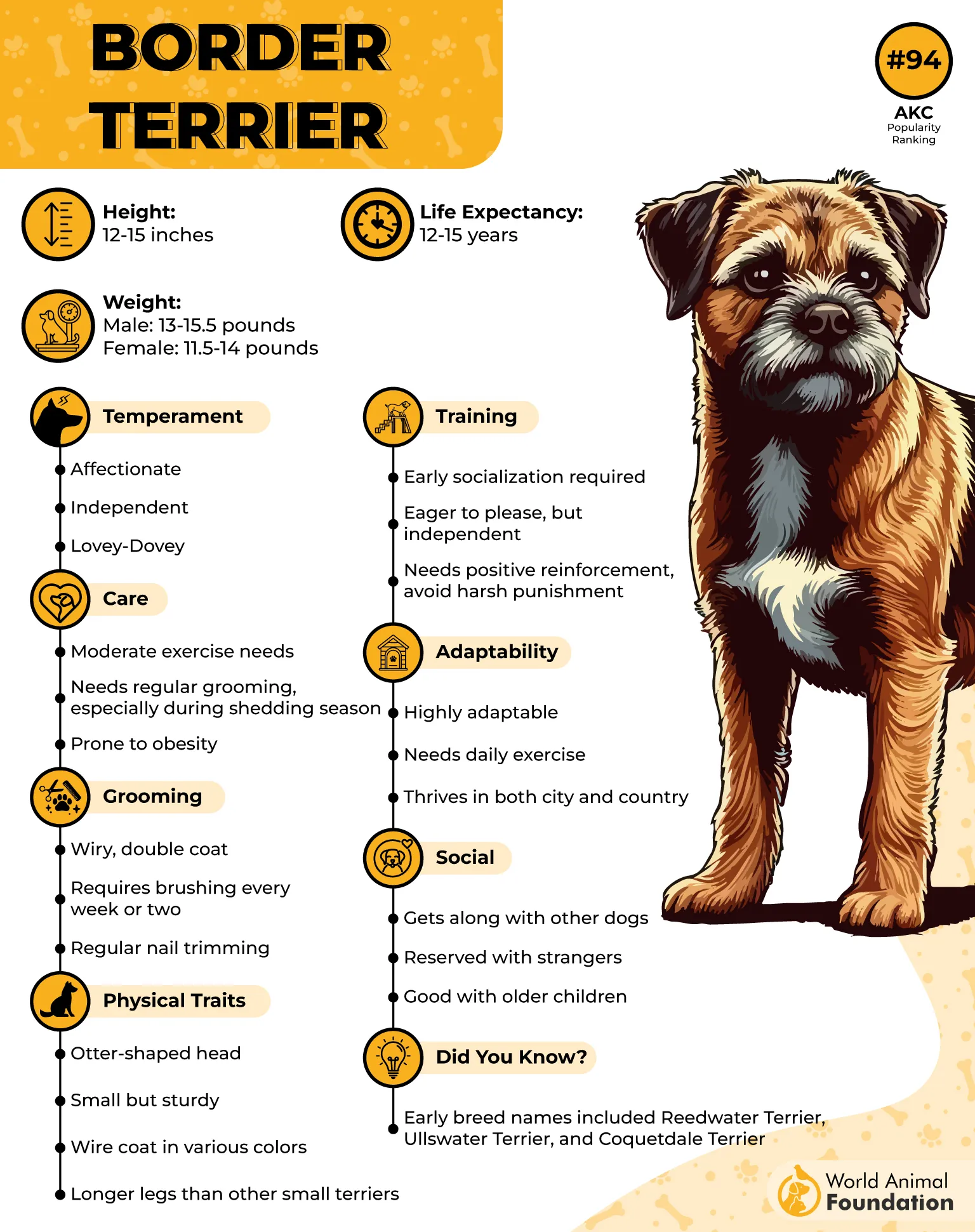
Response to Structured Routines
Border Terriers respond well to scheduled mealtimes, which reduces competition and encourages patience. When routines are reinforced early, they learn to respect boundaries. Their willingness to follow household rules contributes to peaceful cohabitation.
Supervised Feeding Success
While supervision is still advised, Border Terriers are among the breeds that adjust quickly to structured feeding environments. With training, they show improved self-control around shared bowls. They do best when introductions and feeding orders are consistent.
Conclusion
The right dog can change the whole mood of your home, especially during mealtime. The breeds we explored today are not just food-sharers—they’re loyal companions, gentle in nature, and respectful of the animals around them.
Whether you have cats, rabbits, or other friends at home, choosing a breed that’s easy to train and aware of social cues can make all the difference. Some may even surprise you with how well they adapt to shared routines.
From the gentle giant who waits their turn to the incredibly social pup who thrives in group settings, these dogs understand what it means to live in harmony. They don’t compete. They connect. With patience, the right training, and a calm environment, your multi-pet household can feel more like a team than a tangle.


